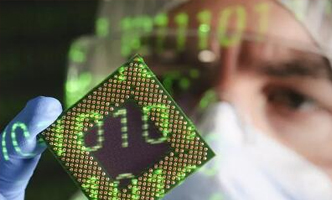Talking about the etching of MEMS process technology
Newstime: 2019-08-19 17:21:14
Etching is to use chemical, physical or both chemical and physical methods to selectively remove the part of the film layer that is not masked by the resist, so as to obtain a pattern on the film that is exactly the same as that on the resist film. . The etching technology is mainly divided into dry etching and wet etching.
Dry etching
Expose the surface of the silicon wafer to the plasma generated in the gaseous state. The plasma passes through the window opened in the photoresist to physically or chemically react with the silicon wafer (or these two reactions) to remove the exposed surface material. Dry etching is the most important method for etching devices at sub-micron size.
Wet etching
Use liquid chemical reagents (such as acids, alkalis, solvents, etc.) to chemically remove materials on the surface of the silicon wafer. Wet etching is generally only used for larger sizes (greater than 3 microns). Wet etching is still used to etch certain layers on silicon wafers or to remove residues after dry etching.
The ideal etching process must have the following characteristics
① Anisotropic etching, that is, only vertical etching, no lateral undercutting. Only in this way can it be ensured that the exact same geometric pattern as that on the resist is copied on the etched film;
② Good etching selectivity, that is, the etching rate of the resist used as the mask and the other film or material under it is much lower than the etching rate of the film to be etched to ensure the etching The effectiveness of resist masking during the process prevents damage to other materials under the film due to over-etching;
③ Large processing batch, easy control, low cost, less environmental pollution, suitable for industrial production.
Dry etching:
Advantages: It can realize anisotropic etching, so as to ensure the fidelity of small patterns after transfer.
Disadvantages: high cost, less used for preparation of microfluidic chips.
Wet etching:
Advantages: strong adaptability, good surface uniformity, less damage to silicon wafers, suitable for almost all metals, glass, plastics and other materials.
Disadvantages: the fidelity of the pattern etching is not ideal, and the minimum line width of the etching pattern is difficult to control.
In-situ chips currently master ion beam etching, deep silicon etching, reactive ion etching, focused ion beam and other etching technologies, and can etch materials such as silicon, silicon oxide, silicon nitride, metal, and quartz. The maximum aspect ratio of deep silicon etching is 20:1, the etching accuracy is high, and the line width is small.





 Links:
Links: 

